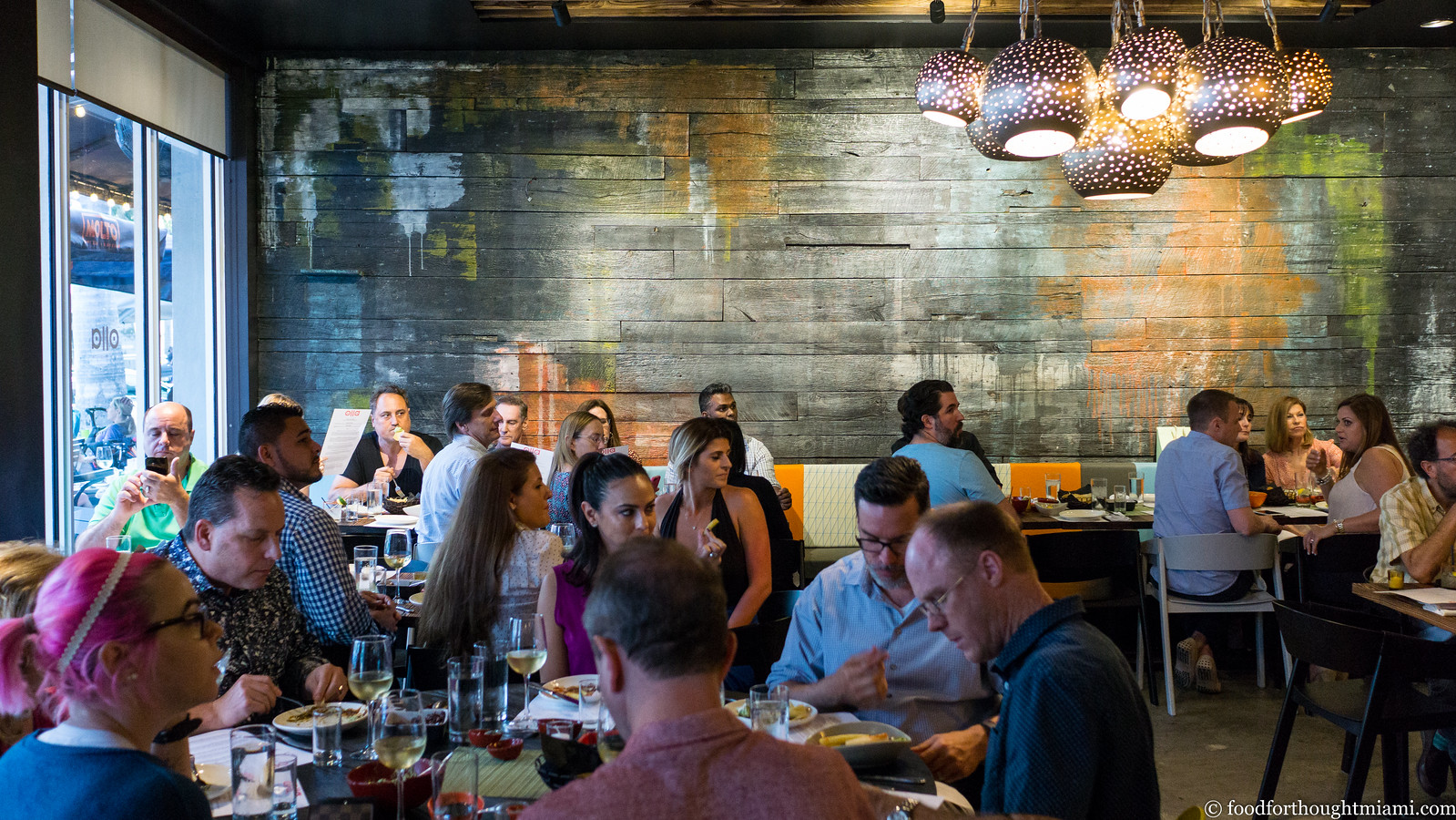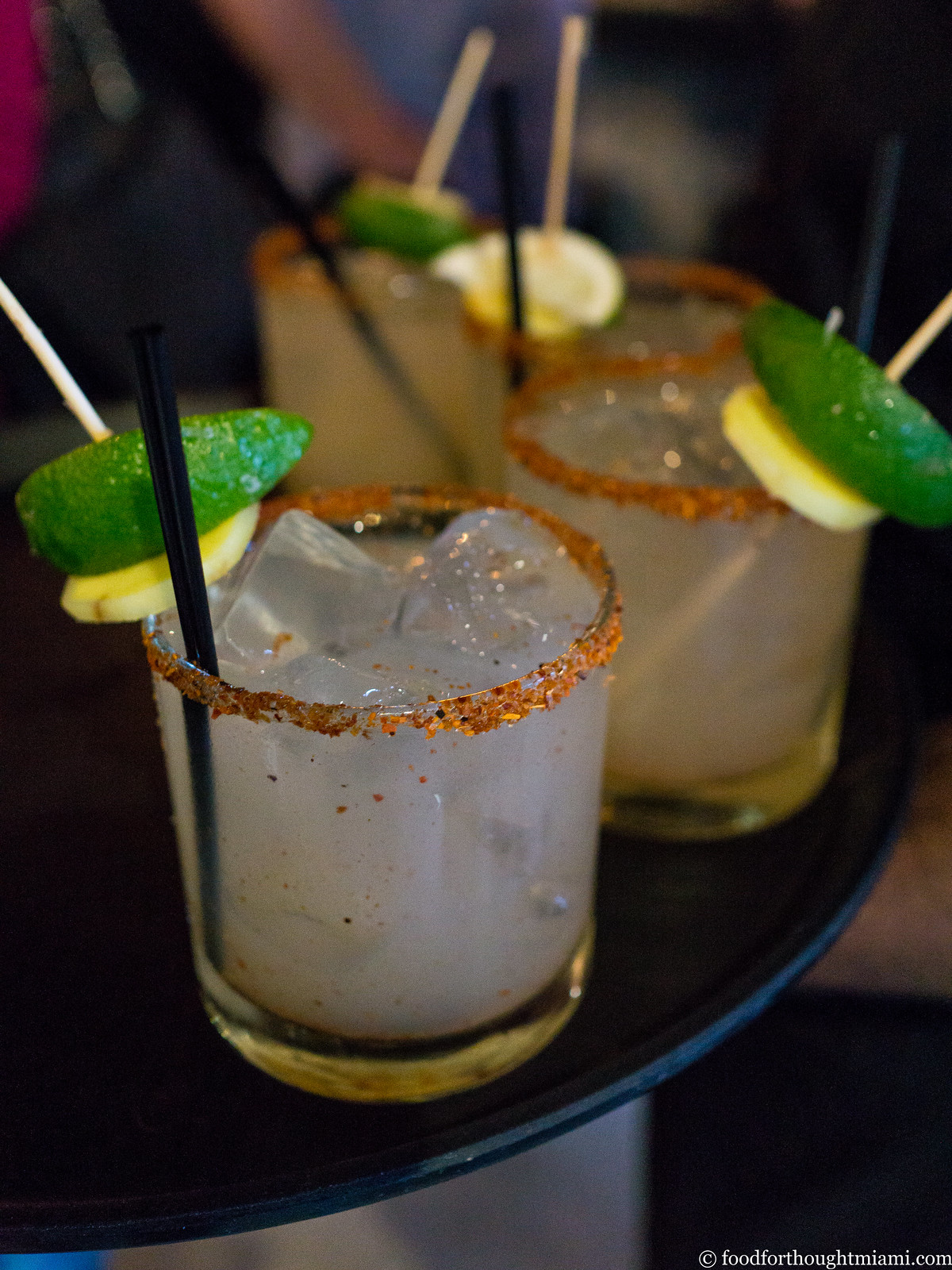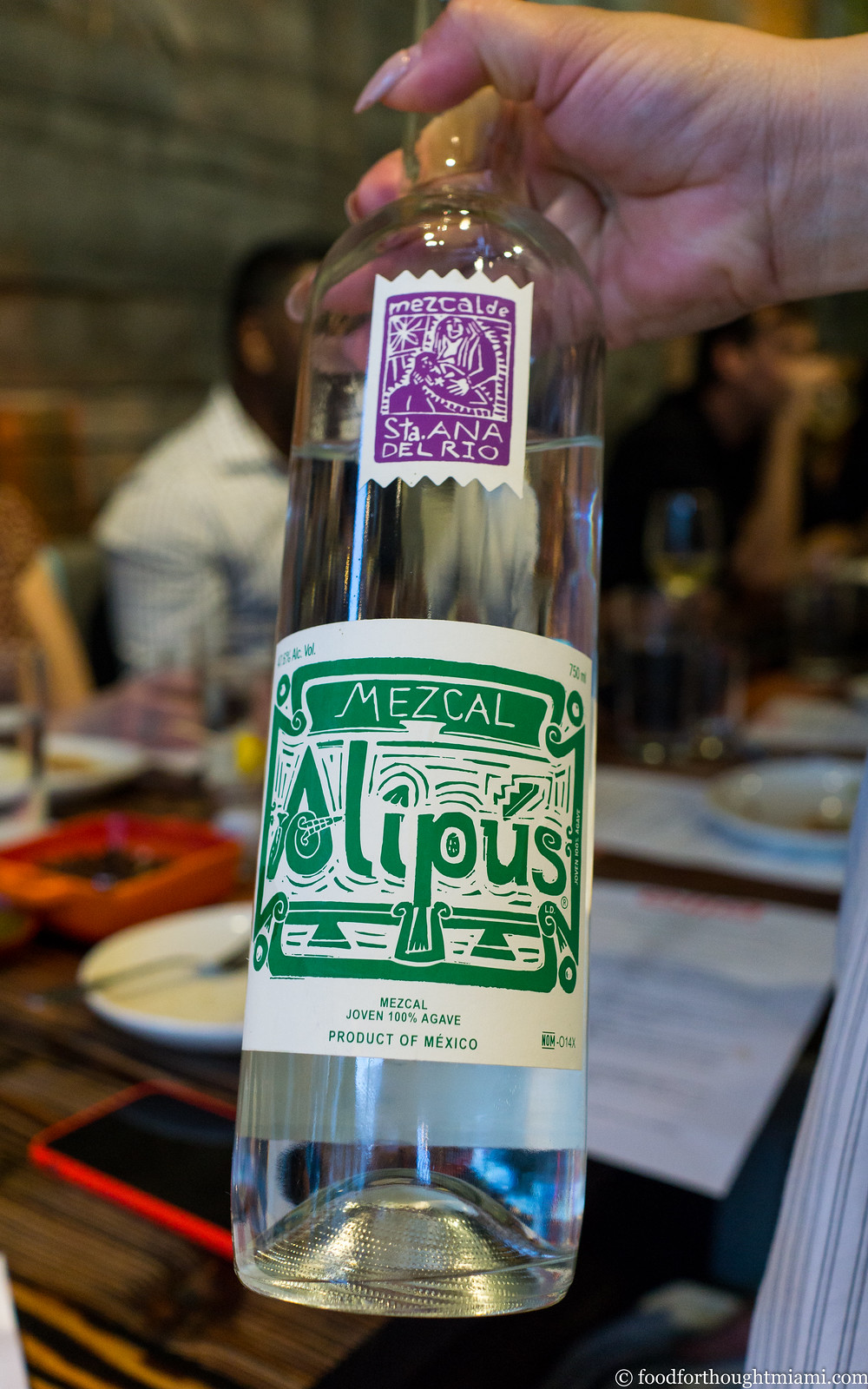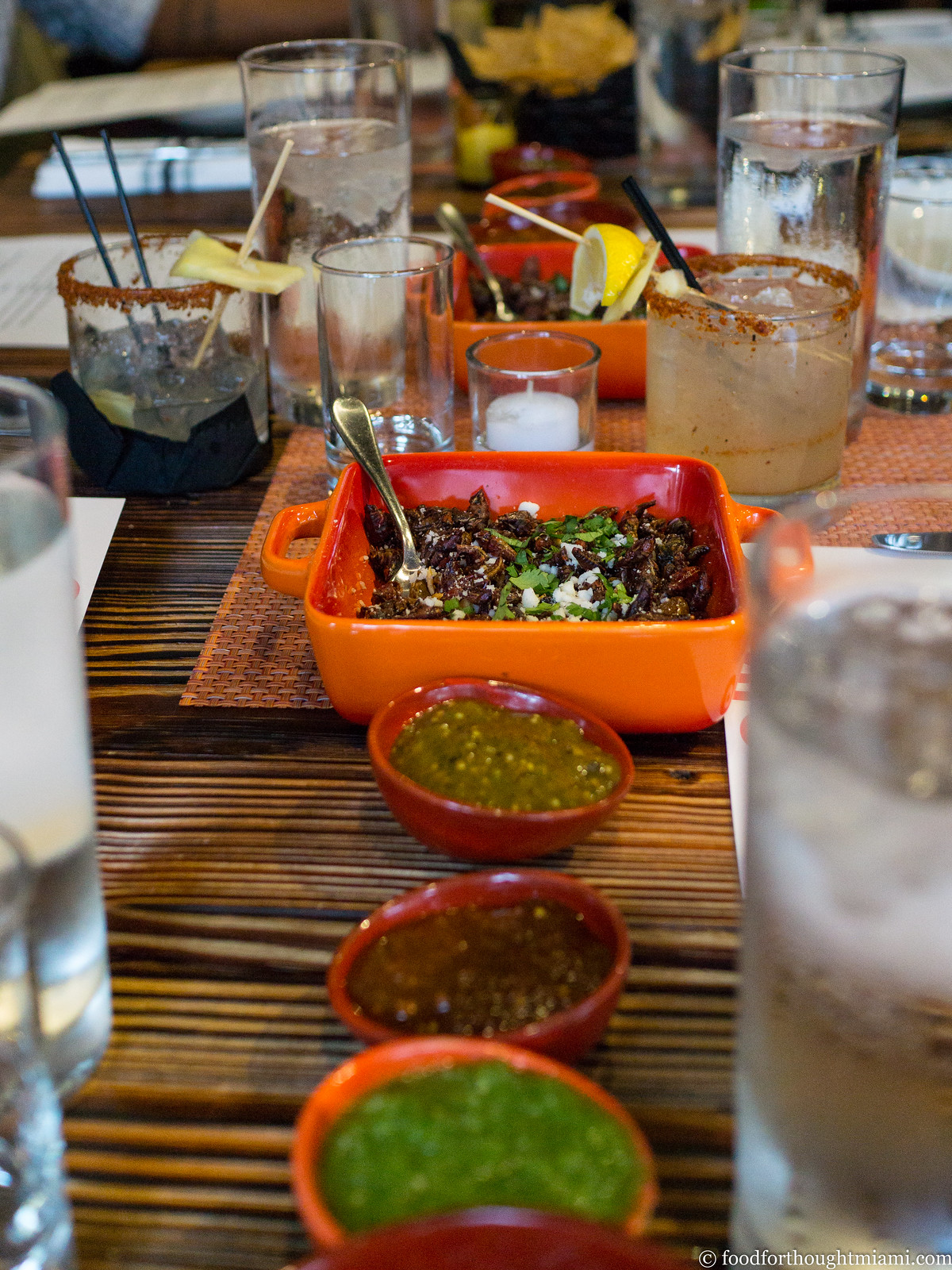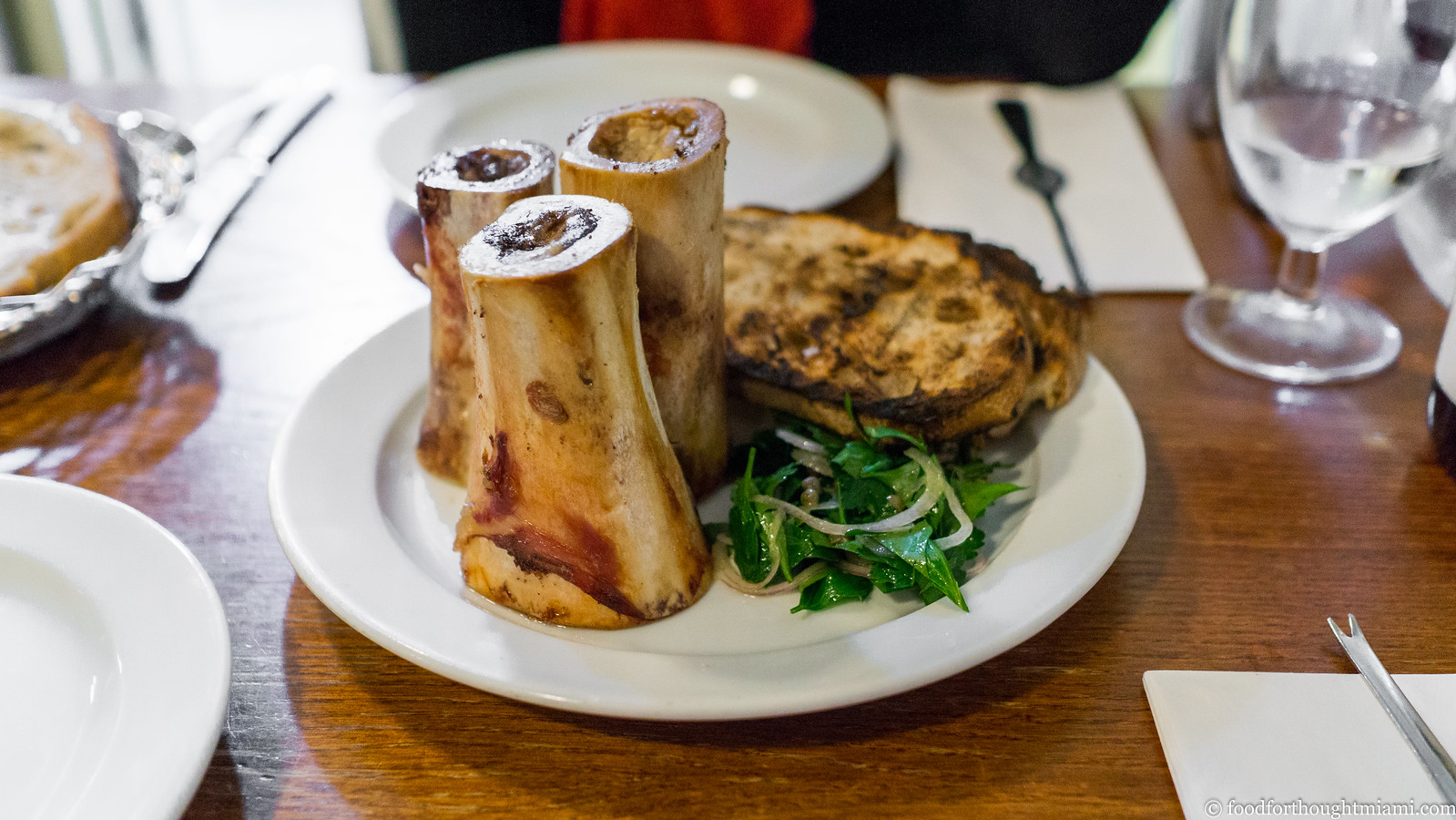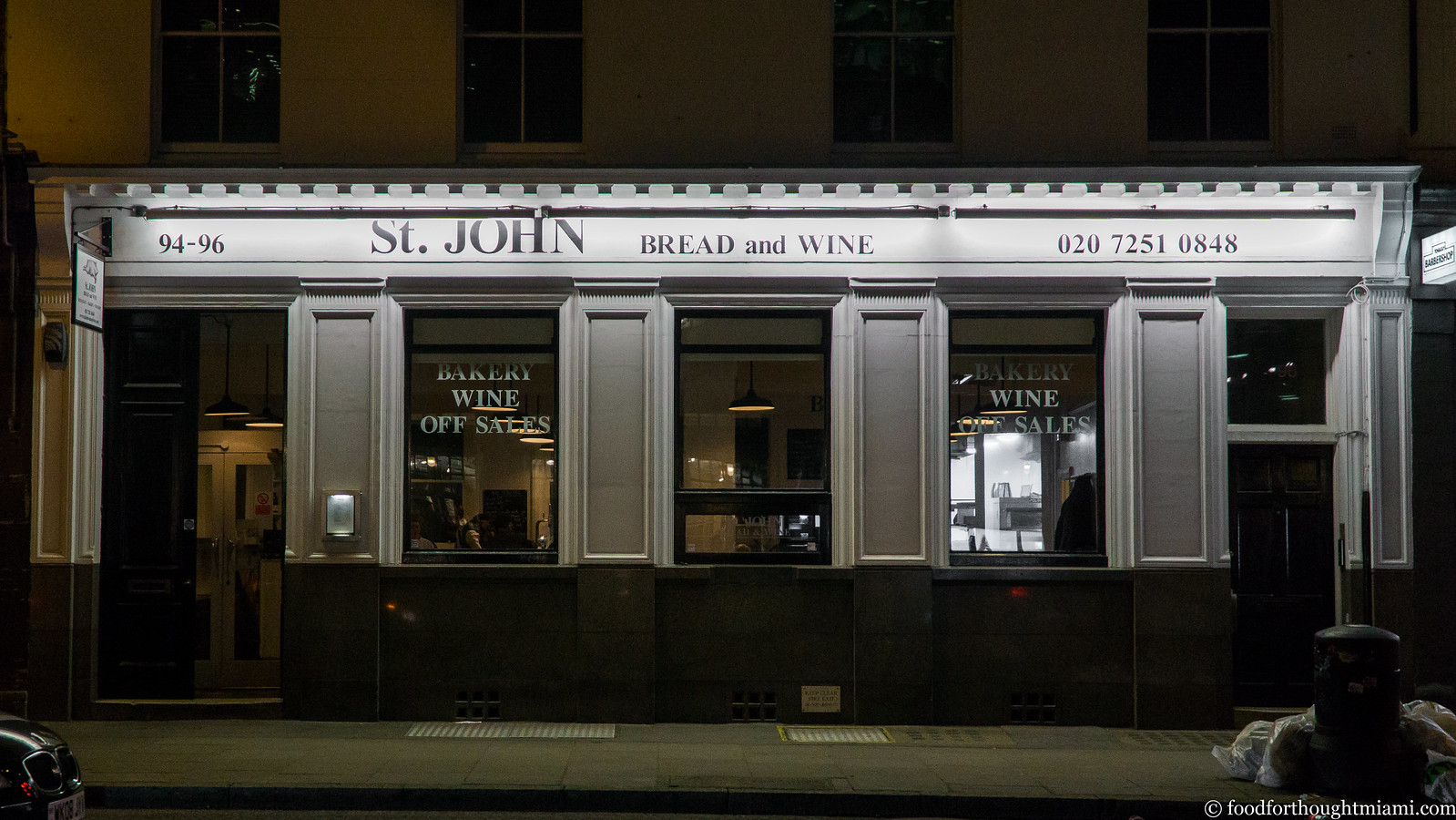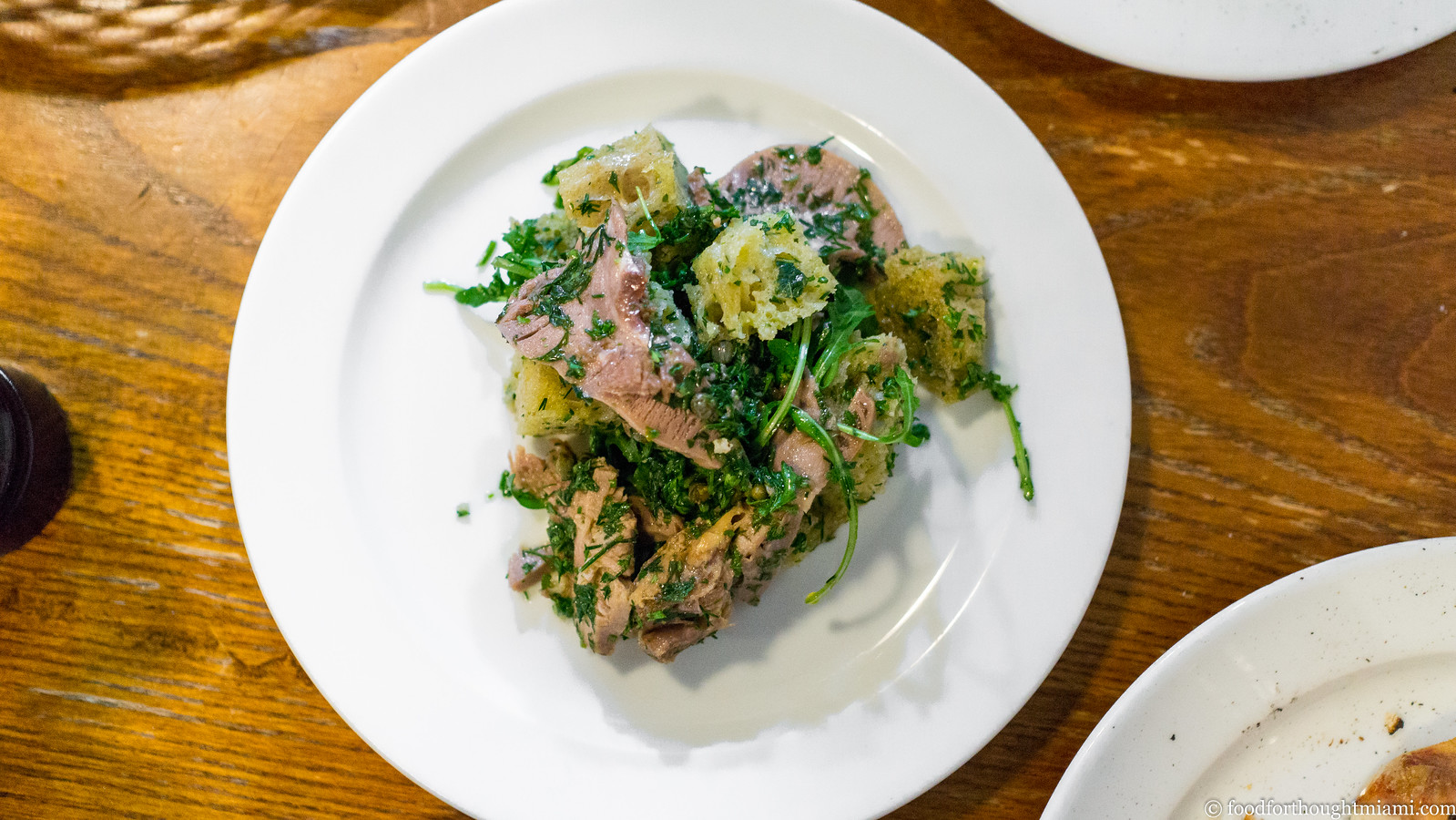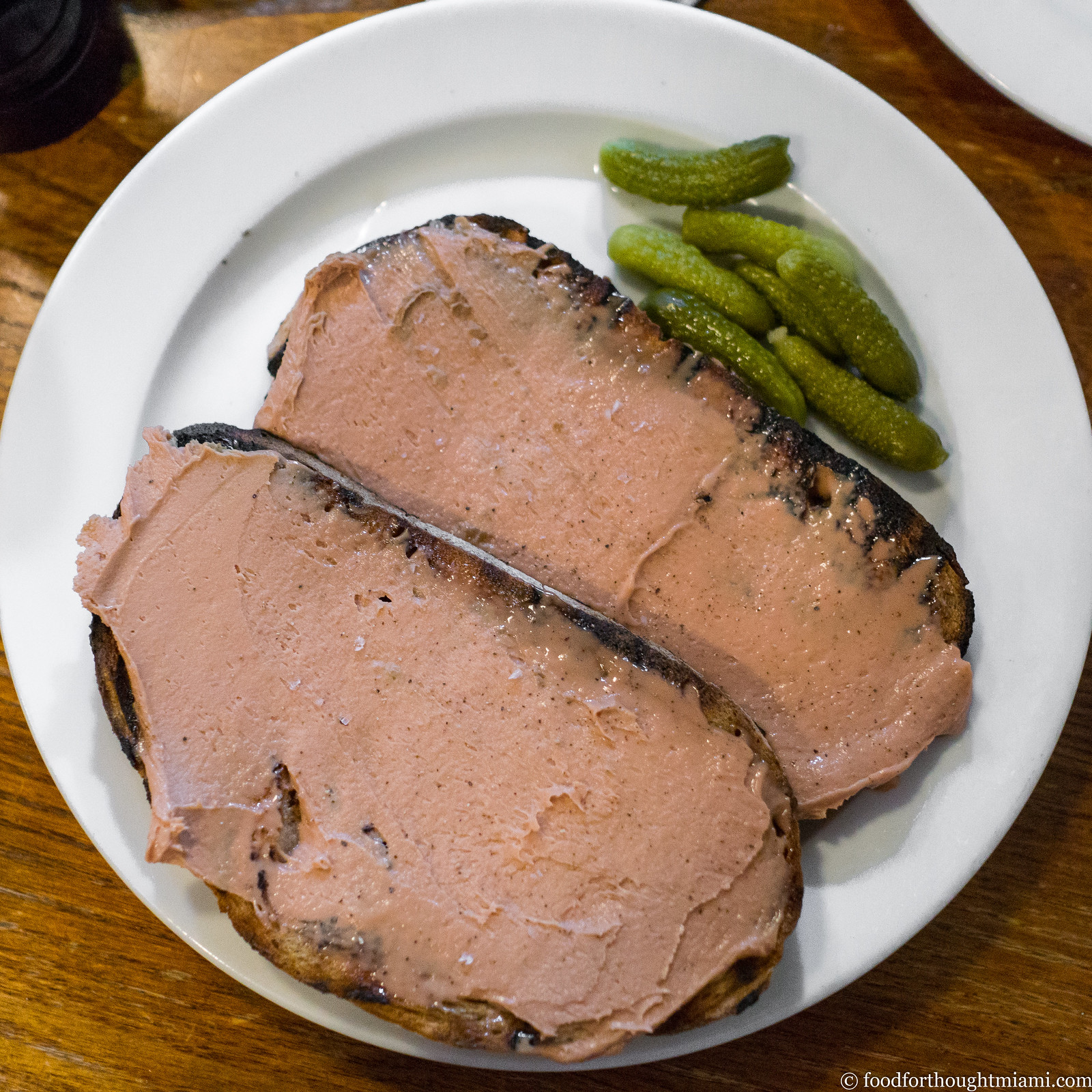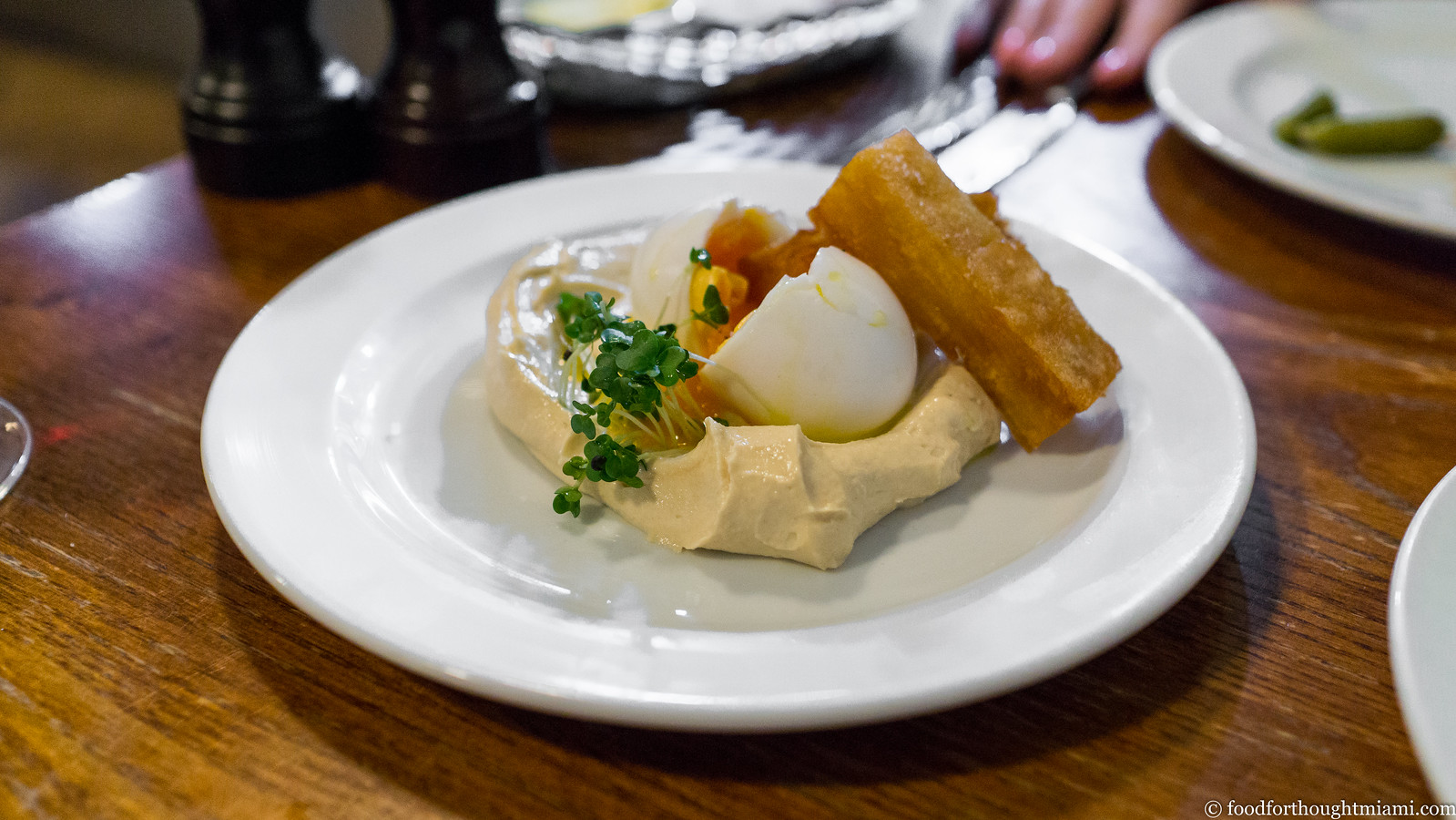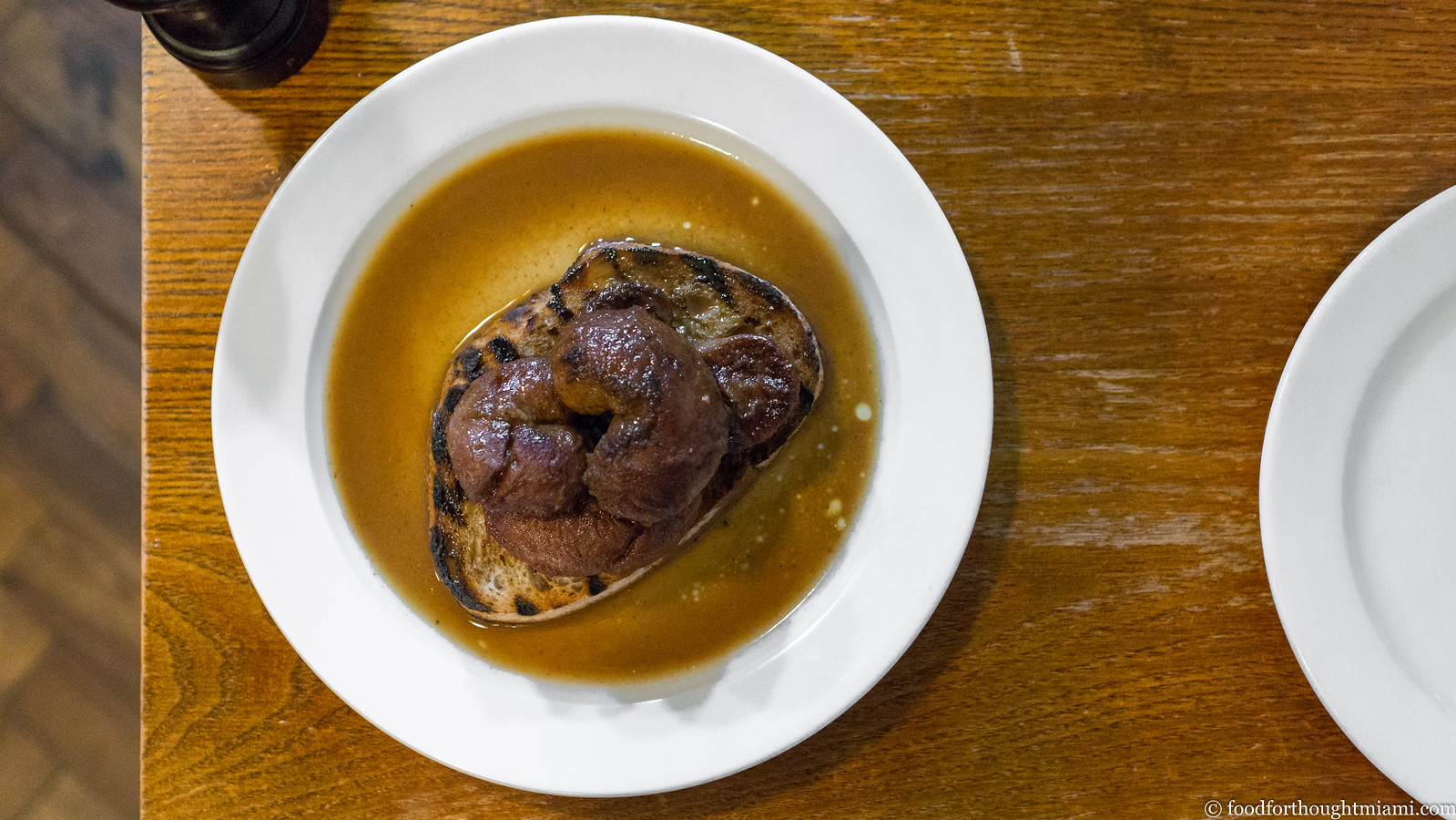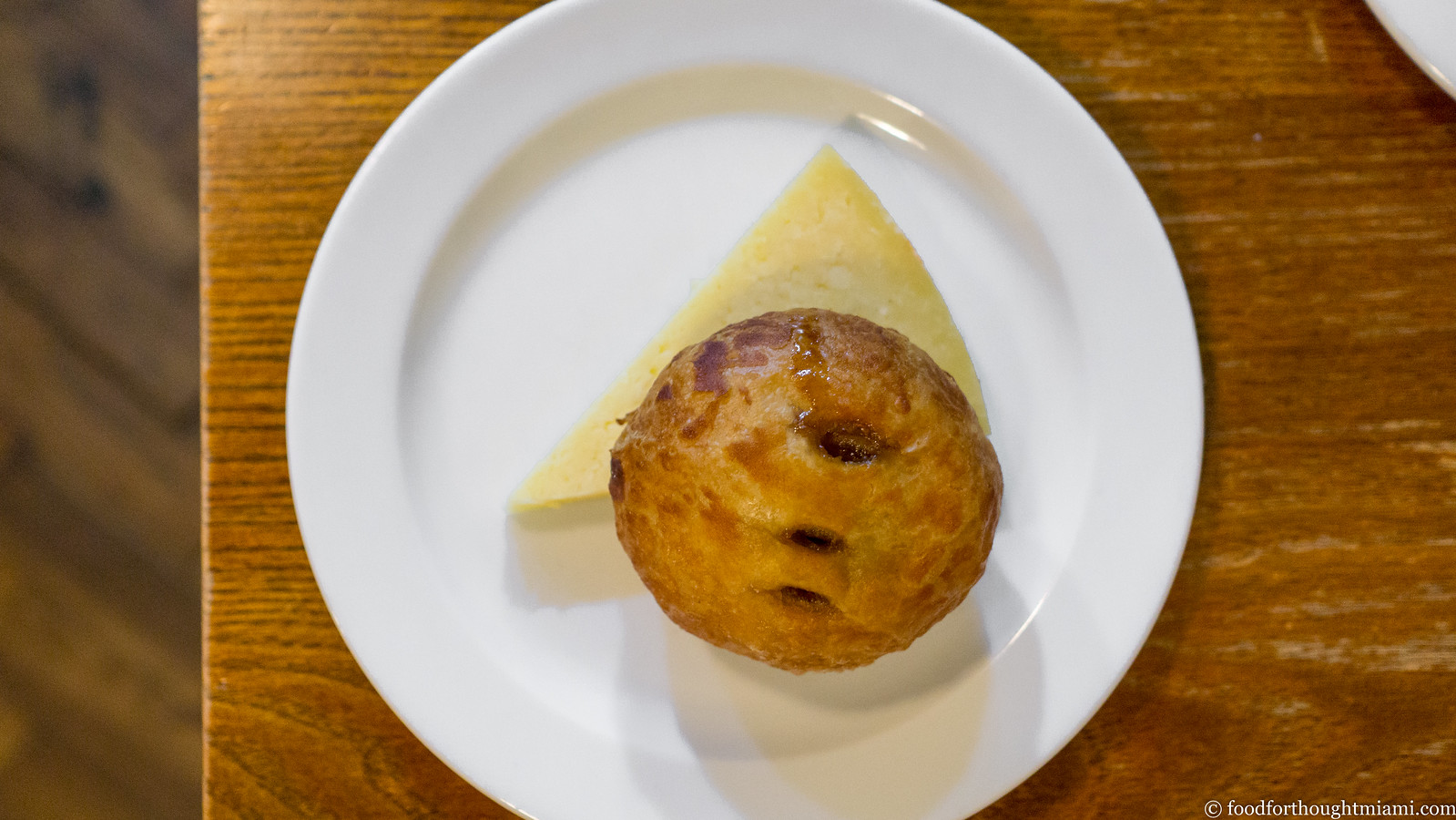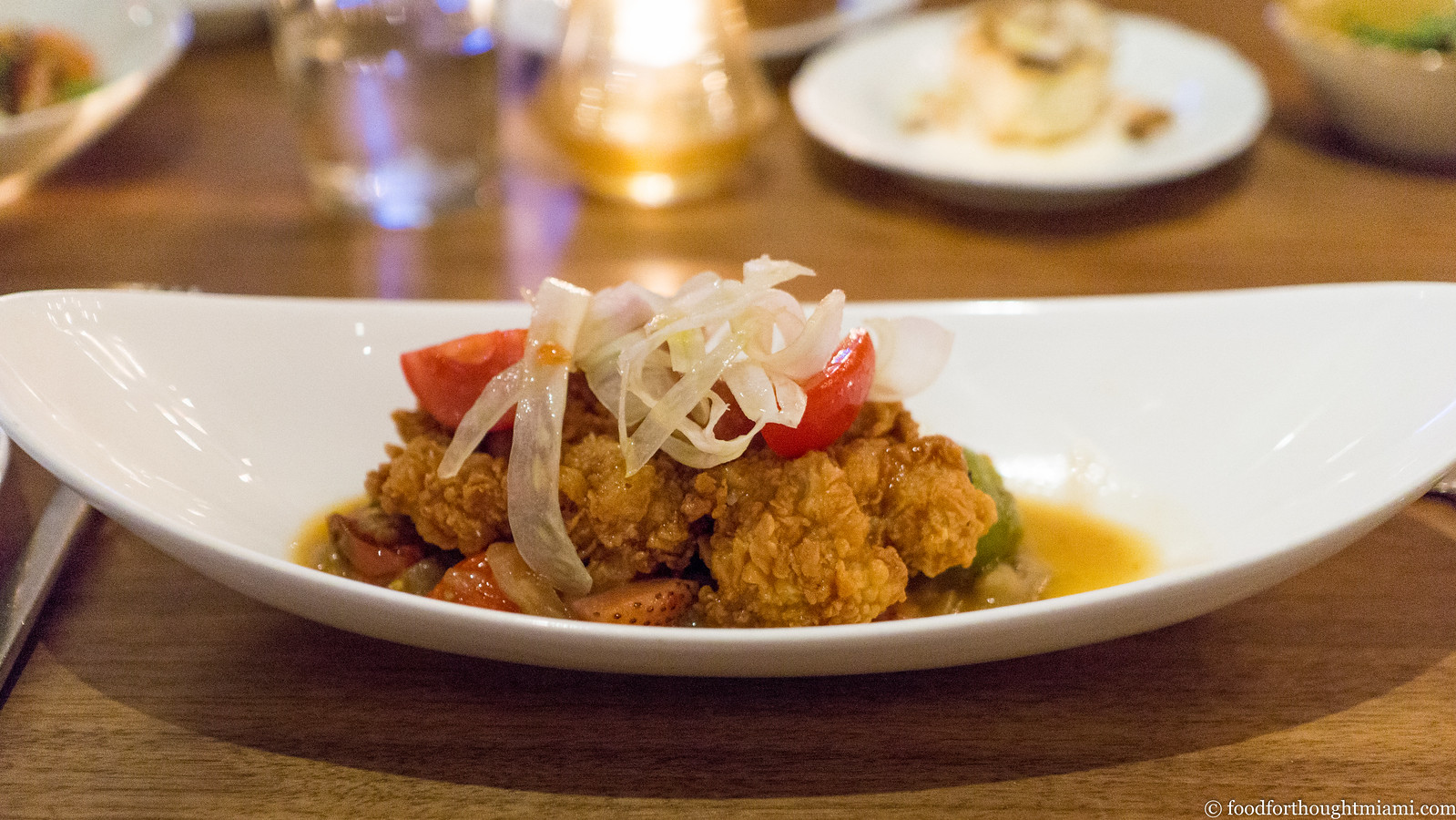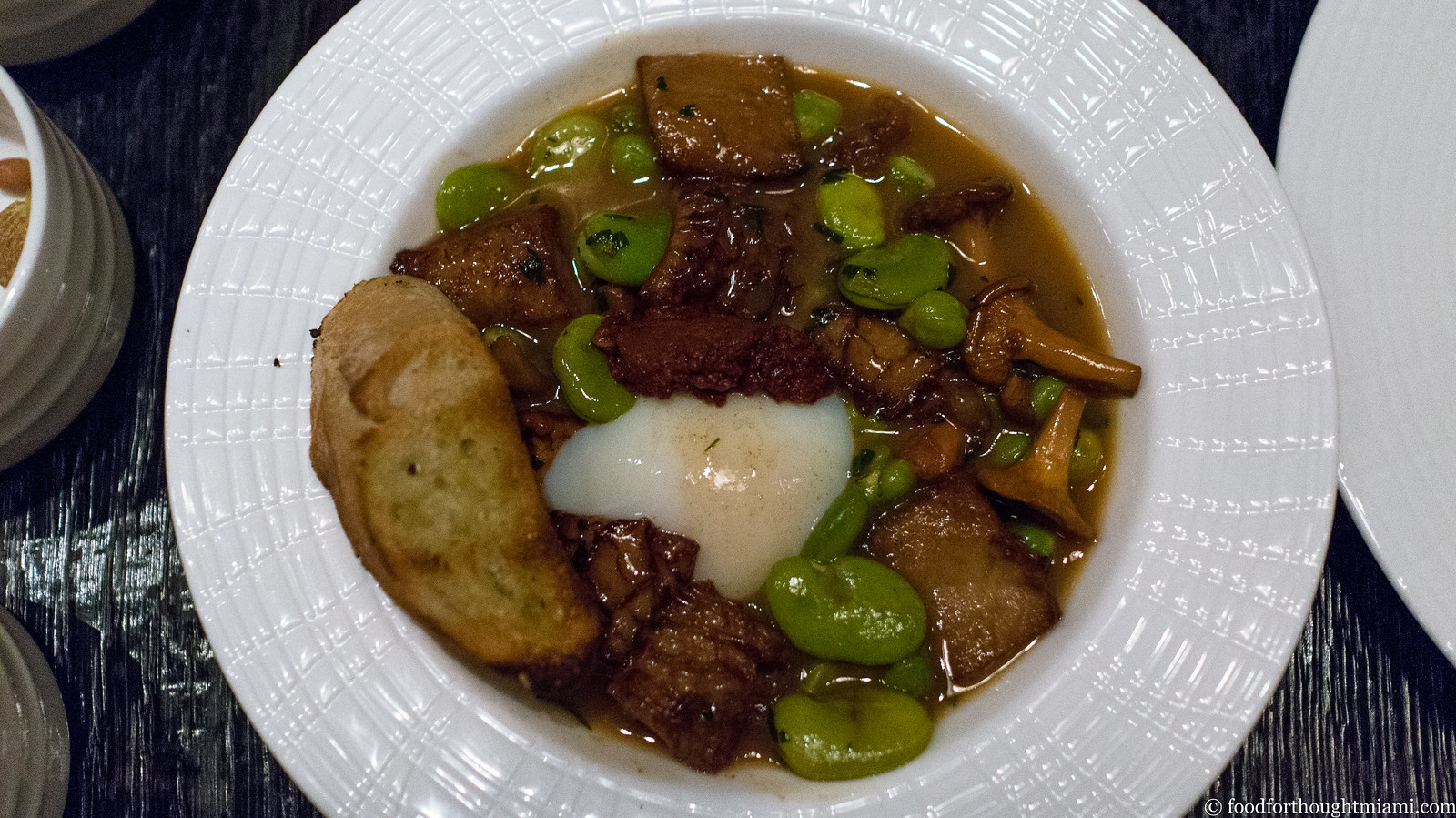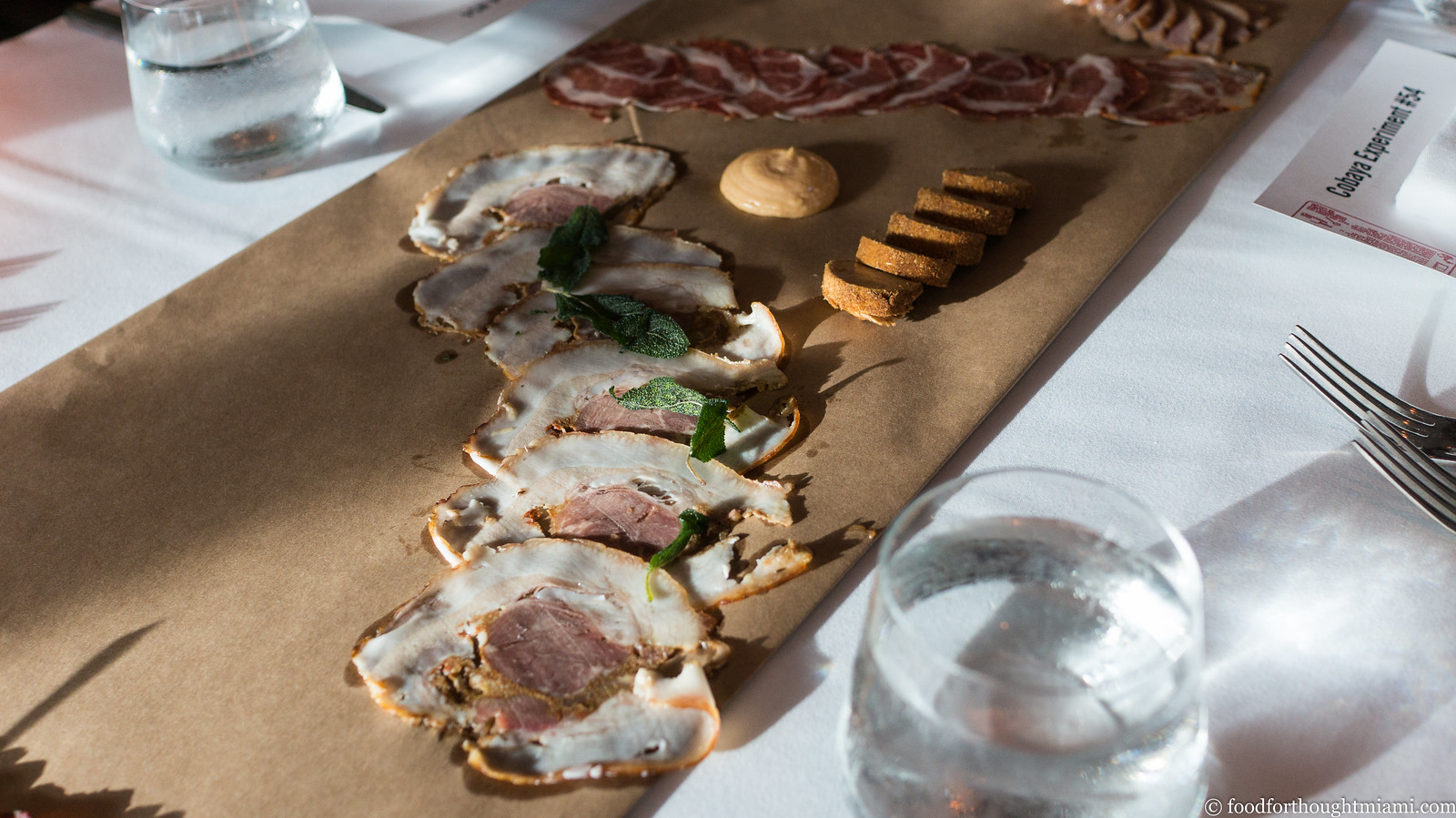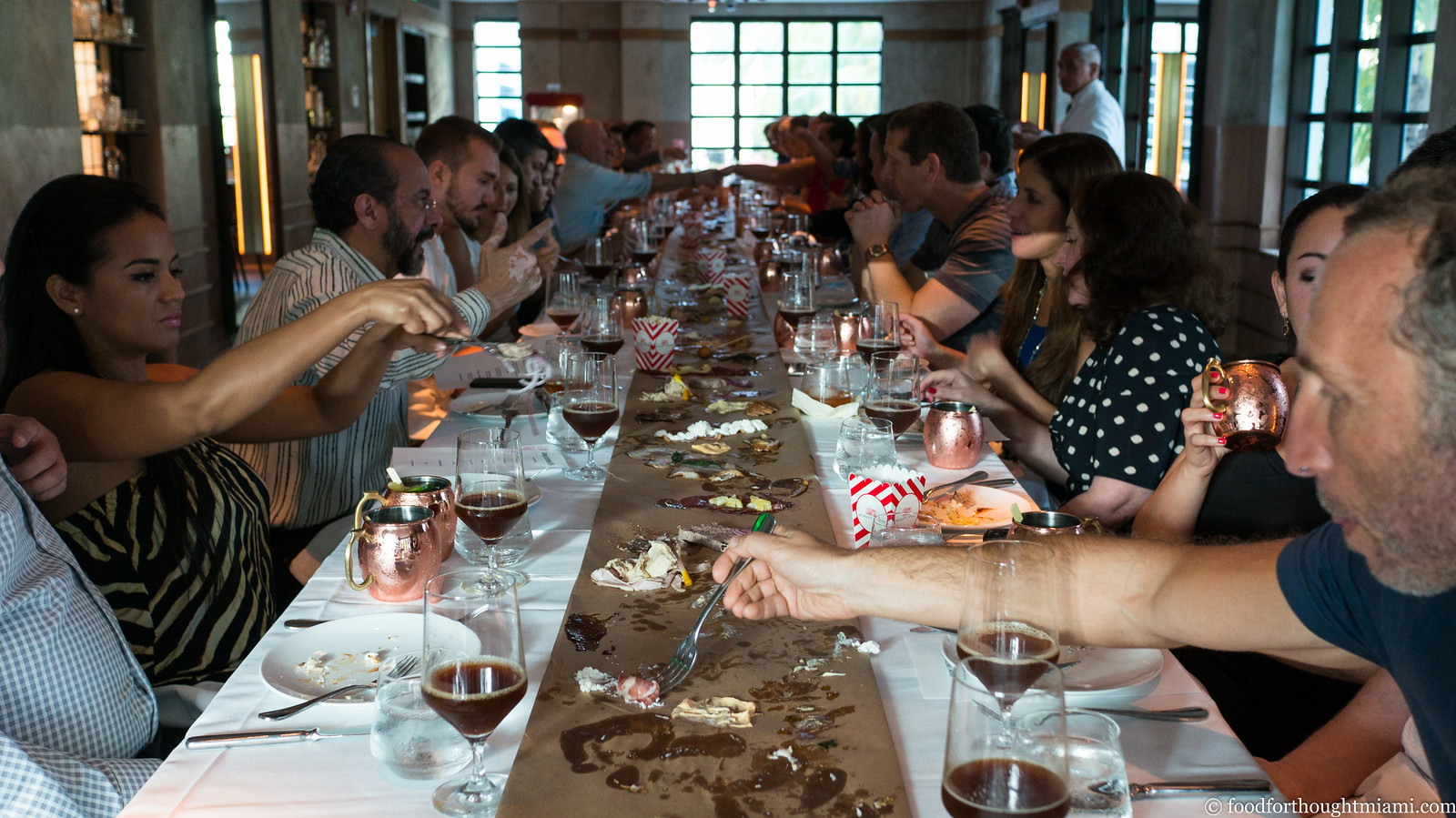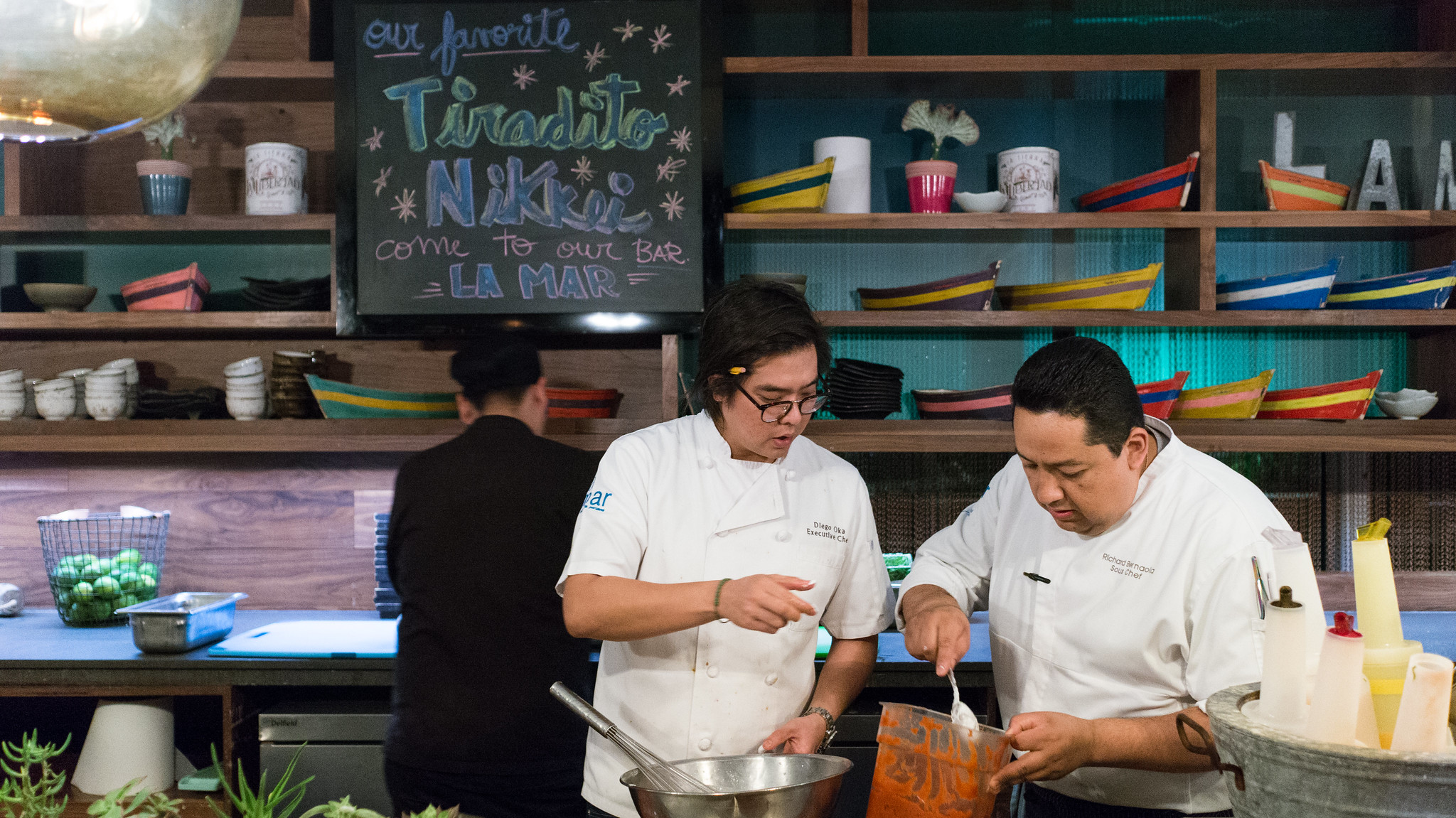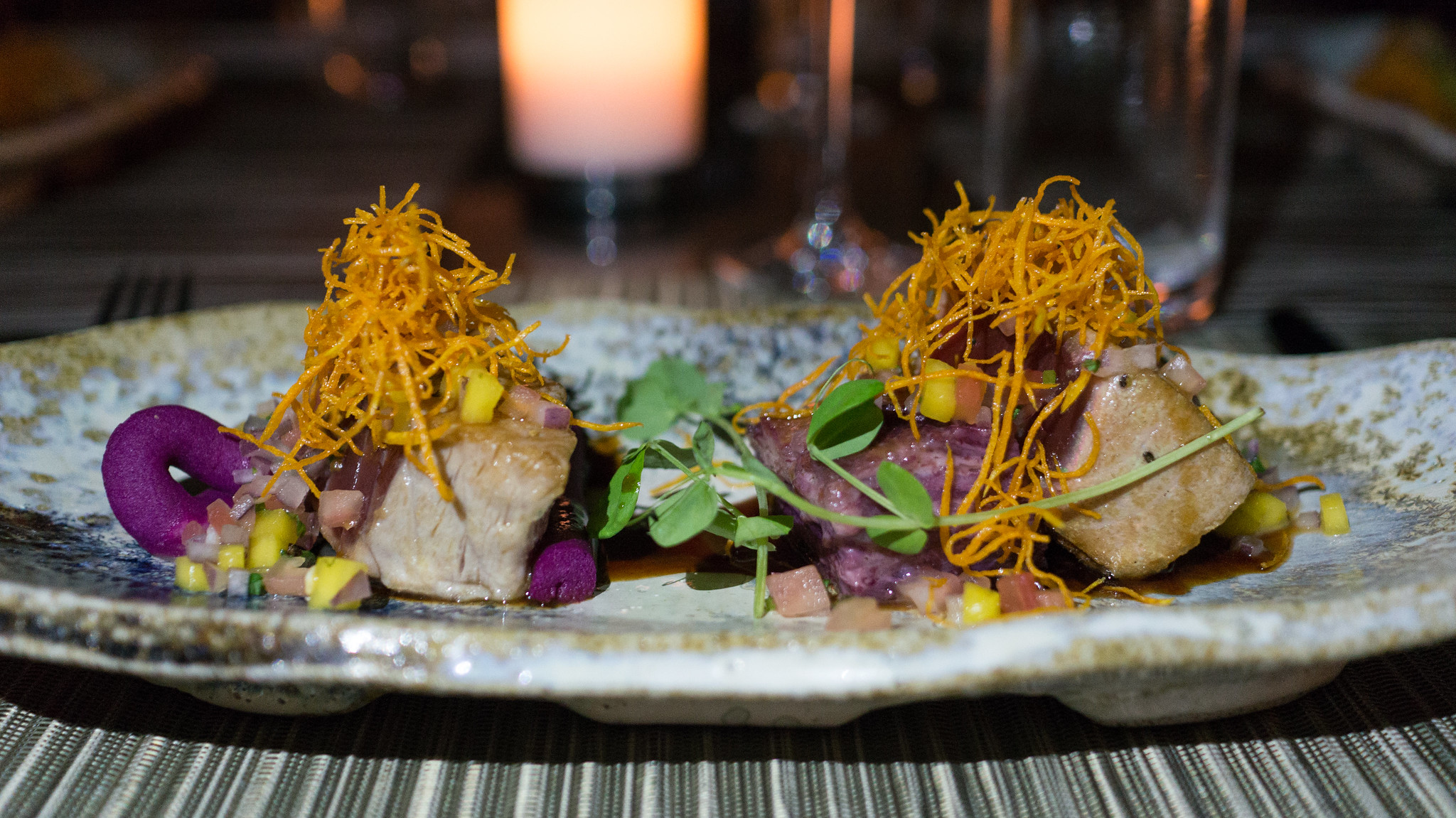Showing posts with label offal. Show all posts
Showing posts with label offal. Show all posts
Wednesday, April 26, 2017
Cobaya Olla with Chef Scott Linquist
Mexican cuisine is one of several that gets saddled with the "soft bigotry of low expectations." The common perception is that it's all chips and salsa and guacamole, tacos and burritos and fajitas, with maybe some tequila shots, mariachi bands and sombreros mixed in for good measure. In fact, it's an incredibly complex and varied cuisine, which is finally starting to get the attention it deserves in the U.S.: witness the success of Enrique Olvera's Cosme in New York, or Alex Stupak's Empellon, or places like Taco Maria and Broken Spanish in L.A., or Californios and Cala in San Francisco, or Rick Bayless' restaurant empire, plus new Chicago places like Dos Urban Cantina and Mi Tocaya. I could keep going; but instead, let me bring this back home.
Because someone is trying to help Miami catch up. At Olla, Chef Scott Linquist's new restaurant on the west end of Lincoln Road, you'll find a menu that goes well beyond the customary tropes, ambitious both in its pursuit of the authentic flavors of Mexico and in finding modern ways of presenting them. My first visit to was in December, only a week after they'd opened, and I was pretty excited by what I found. Not much later, we started to work on putting together a Cobaya dinner, which came to fruition last week.
(You can see all my pictures from the dinner in this Cobaya Olla with Chef Scott Linquist flickr set).
Everyone was welcomed with a house cocktail – a variation on the flavors of a Moscow Mule, which they dubbed the "Oaxacan Burro," featuring Alipus mezcal, a ginger and epazote shrub, a slug of ginger beer and a squeeze of lime. This was prelude to a mezcal sampling courtesy of XXI Wine and Spirits, a distributor for Alipus, which poured three different "single village" offerings. I'm becoming a real fan of mezcal, which is almost exclusively a craft, small-production product, and which can show a fascinating variety of styles and flavors – some with a clean, almost sake-like purity, others floral, or fruity, or grassy, or smoky, or all of the above.
Once our group of fifty was seated (we took over the restaurant for the night), dinner started with a round of bocadillos, or snacks.
Yes, chips and salsa. But not just any garden variety salsa: four different salsas, starting with a basic salsa fresca, and also including a fresh, raw salsa verde (with some bright, fragrant mint in addition to the usual cilantro), a deeper-flavored, charred tomatillo and habañero salsa verde, and a hearty, red brick hued version with pasilla Oaxaca chiles[1] and roasted pineapple. Plus guacamole, because yes, everyone loves guacamole.
(continued ...)
Saturday, April 1, 2017
St. John Bread and Wine | London
Until recently, British food has been saddled with a terrible reputation. I'm reminded of the old George Carlin joke about heaven and hell:
"In heaven, the Italians are the lovers, the French cook the food, the Swiss run the hotels, the Germans are the mechanics, and the English are the police. In hell, the Swiss are the lovers, the English cook the food, the French run the hotels, the Italians are the mechanics, and the Germans are the police."
That reputation, I've always thought, has been undeserved. Even thirty years ago, when I spent a summer in Oxford "studying," I ate very well. Ploughman's lunches with good cheese and bread, rich steak and kidney pies, crisp, steamy fish and chips wrapped in newspaper, fiery Indian and Jamaican food – what's not to like?
Over the past couple decades, general sentiment seems to have shifted, and now London is regarded as one of the world's top dining destinations. Partly that's been driven by international attention for this very moneyed, lucrative market; one of the odd things about planning a recent brief visit to both London and Paris (three days in each) was realizing that many of Paris' top chefs have opened outlets in London so that, in Epcot-like fashion, you could arguably taste some of the best of Paris without ever crossing the Channel. But even more so, it's been driven by English chefs' internal reflection: recognizing, and promoting, great British cookery.
One of the individuals who was formative in that shift was Fergus Henderson. His restaurant, St. John, which opened in 1995, and his cookbook, first published in 1999 as "Nose to Tail Eating: A Kind of British Cooking" (released in the U.S. in 2004 as "The Whole Beast: Nose to Tail Eating") are mostly recognized for being a manifesto on the joys of offal and whole-animal utilization. They are most definitely that, but they also are an ode to traditional British dishes – things like cock-a-leekie soup and bath chaps and game birds and Eccles cakes – and the value of native ingredients.
I'd never been. So it was the first dinner reservation I made for this trip.
We actually booked at St. John Bread and Wine, a sibling to the original St. John around the corner from Smithfield Market. Bread and Wine, originally intended to be a bakery and wine shop (thus the name), makes its home across from the Spitalfields Market,[1] and is slightly more casual than the mothership. More of the menu is offered as small plates, and they ascribe to the "dishes come out as they're ready and are meant for sharing" school of service. Since this gave us an opportunity to sample broadly, it was perfect.
(You can see all my pictures in this St. John Bread and Wine flickr set).
Of course, you have to start with the roasted marrow bones – Henderson's most famous dish, one that has been lovingly duplicated countless times in countless restaurants around the world, one that Anthony Bourdain declared his "always and forever choice" for his Death Row meal. The formula is now well-known: roasted femur bones; toasted bread; a pile of parsley salad; a mound of coarse sea salt. Scoop the oozy marrow from the bone, spread on to the toast, dress with a sprinkle of salt and a pinch of the salad, and enjoy. I've had it dozens of times, but never until now the original. And yes, it's the best: the marrow at the magic borderline between solid and liquid, the acid and salt and herbaceous bite of the salad right on the edge of too aggressive without crossing the line, with just the right punch of caper and shallot. I can't say it better than Fergus himself:
"Do you recall eating Raisin Bran for breakfast? The raisin-to-bran-flake ratio was always a huge anxiety, to a point, sometimes, that one was tempted to add extra raisins, which inevitably resulted in too many raisins, and one lost that pleasure of discovering the occasional sweet chewiness in contrast to the branny crunch. When administering such things as capers, it is very good to remember Raisin Bran."Though not as famous, the other dishes we tried exhibited the same winning combination of good, honest ingredients, intense, robust flavors, and attentive execution.
I loved these tender curls of lamb's tongues wrapped around cubes of bread, all enrobed in a bright, verdant green sauce, like a meaty panzanella salad. Picking at a smoked fish nearly always brings me joy, and the minimalist approach here – the unadorned back end of a smoked mackerel, served simply on a plate with a potato salad given a sinus-clearing blast of mustard dressing – is my kind of happy meal.
Another testament to the joy of simplicity: slabs of toast spackled with a rich, intense mousse of duck livers and foie gras. It's just nearly too much; then you take a bite of cornichon, your appetite is restored, and you go back for more. The smoked cod's roe is like salt, smoke and sea wrapped in silk, but maybe the best part are the crispy batons fashioned from thin layers of potato perched on top. We finished with deviled kidneys: chewy, soft, springy, and ferrous, served over toast drenched with cooking juices spiked with mustard powder and Worcestershire sauce.[2]
We ordered dessert whilst draining the last of a bottle of Beaujolais, starting first with St. John's version of a classic – Eccles cake. There are whole families of traditional British desserts of which I know nothing, this being a good example. Every time I'd peruse the online menu at St. John I'd see it, and so of course I had to order it. The sweetness of the "cake" – a flaky pastry wrapped around a filling of sticky currants – is balanced by an accompanying slab of fresh, crumbly, sharp, faintly salty Lancashire cheese. Then a few minutes later, a batch of warm, airy madeleines, fresh from the oven. We trusted our server for something to drink with these, and our trust was rewarded with a glass of Pineau de Charentes.
Honestly, I wondered if St. John would live up to its nearly mythical reputation. Bourdain, in his foreword to the U.S. release of Nose to Tail, acknowledges, "My enthusiastic rant in my book A Cook's Tour made him sound like George Washington, Ho Chi Minh, Lord Nelson, Orson Welles, Pablo Picasso, and Abbie Hoffman – all rolled into one." And Henderson, both in interviews and on the page, evinces such unbridled enthusiasm, humble charm, and subtle wit that it's hard to imagine not liking his food. This is a man who can make curly parsley sound good![3]
But this was just a joyous meal: great ingredients; straightforward, bold, intense flavors; presented without any fanfare but prepared with subtle finesse. In my version of heaven, Fergus is welcome to cook the food.
St. John Bread and Wine
94-96 Commercial Street, London
020 7251 0848
[1] While Smithfield is still a functioning meat market, Spitalfields has been refurbished into a shopping mall.
[2] I rarely get to eat kidneys, and even more rarely get to eat properly prepared kidneys, but even so, their sort of crumbly, bouncy texture still puts them fairly low on my Favorite Offal list. Tripe, or livers, or sweetbreads, or hearts, would all rank before kidneys in my book.
[3] "As the swish, swish, swish of bunches of flat Italian parsley is to be heard in kitchens across the land, it seems time to celebrate the strength and character of the indigenous curly parsley. Its expression of chlorophyll and well being, strong flavor, slightly prickly texture, and its structural abilities enable such things as Parsley Sauce."
[2] I rarely get to eat kidneys, and even more rarely get to eat properly prepared kidneys, but even so, their sort of crumbly, bouncy texture still puts them fairly low on my Favorite Offal list. Tripe, or livers, or sweetbreads, or hearts, would all rank before kidneys in my book.
[3] "As the swish, swish, swish of bunches of flat Italian parsley is to be heard in kitchens across the land, it seems time to celebrate the strength and character of the indigenous curly parsley. Its expression of chlorophyll and well being, strong flavor, slightly prickly texture, and its structural abilities enable such things as Parsley Sauce."
Sunday, July 17, 2016
Cobaya Qui at Pao
Every time we do one of these Cobaya dinners, there are always any number of things which can go wrong. We ask the chefs to push themselves, to truly treat it as an experiment; and not every experiment succeeds. We encourage ambition, even when sometimes the reach may exceed the grasp. A dish just may not work, or the execution may falter when the scale goes from a test run in the kitchen to a service for a big group.
Then every so often we miss in the opposite direction, and fail to instill the trust or confidence that emboldens a chef to go outside of their comfort zone.[1] Even a very good meal can be something of a disappointment – for us, anyway – if it doesn't offer something different from the usual restaurant experience.
I'd been to Paul Qui's restaurant Pao in the Faena Miami Beach once before, very shortly after it opened (and wrote about it here, where you can also get much of Chef Qui's back story). I had a good meal – some dishes were great – but it felt restrained, like there was a lot more reverberating under the surface. It almost seemed as if he was cooking for this room, trying to match the polish of the gilded (literally!) ceiling and multi-million dollar Damien Hirst sculpture that is its centerpiece. I wanted to see what he could do if unburdened by those expectations, and just allowed to cook.
Qui and his chef de cuisine at Pao, Derek Salkin, did exactly that this past Thursday for fifty of us guinea pigs. And this one got pretty much everything right.
(You can see all my pictures in this Cobaya Qui at Pao flickr set).
After a welcome cocktail, a variation on a blackberry bramble, which some enjoyed on the terrace, we settled into several communal tables to start dinner.
A couple small bites to start: first, kumamoto oysters, topped with sake granite, in a frothy puddle with flavors of shiso, umeboshi and tomato. Next, upright lumpia, their crisp shells filled with foie gras, tangy, floral passionfruit, szechuan peppercorn for zing, crumbled pistachio for nutty depth.
This first full course was an unusual one, but I liked how it all pulled together. The base of the plate was covered with a film of slippery, silky rice milk, dotted with olive oil, an herbaceous green purée, and flower petals. That was the platform for a scoop of creamy, milky fresh ricotta, laden with shiny smoked trout roe and ribbons of white kimchi, the fermented cabbage adding some kick and contrast. A twisted black garlic cracker topped the odd but tasty composition.
(continued ...)
Then every so often we miss in the opposite direction, and fail to instill the trust or confidence that emboldens a chef to go outside of their comfort zone.[1] Even a very good meal can be something of a disappointment – for us, anyway – if it doesn't offer something different from the usual restaurant experience.
I'd been to Paul Qui's restaurant Pao in the Faena Miami Beach once before, very shortly after it opened (and wrote about it here, where you can also get much of Chef Qui's back story). I had a good meal – some dishes were great – but it felt restrained, like there was a lot more reverberating under the surface. It almost seemed as if he was cooking for this room, trying to match the polish of the gilded (literally!) ceiling and multi-million dollar Damien Hirst sculpture that is its centerpiece. I wanted to see what he could do if unburdened by those expectations, and just allowed to cook.
Qui and his chef de cuisine at Pao, Derek Salkin, did exactly that this past Thursday for fifty of us guinea pigs. And this one got pretty much everything right.
(You can see all my pictures in this Cobaya Qui at Pao flickr set).
After a welcome cocktail, a variation on a blackberry bramble, which some enjoyed on the terrace, we settled into several communal tables to start dinner.
A couple small bites to start: first, kumamoto oysters, topped with sake granite, in a frothy puddle with flavors of shiso, umeboshi and tomato. Next, upright lumpia, their crisp shells filled with foie gras, tangy, floral passionfruit, szechuan peppercorn for zing, crumbled pistachio for nutty depth.
This first full course was an unusual one, but I liked how it all pulled together. The base of the plate was covered with a film of slippery, silky rice milk, dotted with olive oil, an herbaceous green purée, and flower petals. That was the platform for a scoop of creamy, milky fresh ricotta, laden with shiny smoked trout roe and ribbons of white kimchi, the fermented cabbage adding some kick and contrast. A twisted black garlic cracker topped the odd but tasty composition.
(continued ...)
Monday, March 7, 2016
best thing i ate last week: sweetbreads with tomato, fennel and pickled strawberry at Cena by Michy
The decor and menu have changed at Cena by Michy (f/k/a Michy's), but at least one thing remains the same: if there is a sweetbread dish on the menu at a Michelle Bernstein restaurant, it will be outstanding. Case in point: this sweetbread milanese, like a cloud encased in a crispy shell. It's served with a tangy sort of stew of cherry tomatoes and fennel ribbons, with a wonderful little surprise: pickled strawberries, which provide little jolts of refreshing, sweet-tart contrast.
I had been holding off on a visit to Cena because the online menu had not changed since my last visit and I was hoping for a little variety, but it turns out that's just because it's not updated in real-time. A couple other new items I really liked: croquetas of 'nduja and stracciatella, served with a romesco dipping sauce; and lurid magenta beet cavatelli with a pistachio and green almond crumble and Point Reyes blue cheese.
Monday, February 29, 2016
best thing i ate last week: Andrew Zimmern's vitello tonnato at Cobaya SoBeWFF
Last week, for the second year in a row, Cobaya Gourmet Guinea Pigs teamed up with the South Beach Wine and Food Festival to put on a dinner together, this time at Chef Alex Chang's Vagabond restaurant in the hotel of the same name. In a repeat performance, Andrew Zimmern joined us again, and once again stole the show among a group that also included Jon Shook and Vinny Dotolo of Animal, Son of a Gun and an ever-expanding roster of other Los Angeles restaurants, and Carlo Mirarchi of Brooklyn's Michelin two-star Blanca, the grown-up sibling of Roberta's Pizza.
(You can see all my pictures from the dinner in this Cobaya SoBeWFF flickr set).
Most folks probably know Zimmern from his James Beard Award winning Travel Channel program, Bizarre Foods. What they may not know is that the guy can also flat out cook. In addition to a silky vichyssoise with a citrus-cured oyster that was served as guests gathered around the Vagabond's poolside bar, he also was responsible for my favorite course of the evening: a riff on an Italian classic, vitello tonnato, done here with thin slices of veal tongue, a tangy anchovy-laden dressing, citrus segments, chile oil spiked fried capers and slivered olives for some punch, and crispy chickpea crackers for scooping.
Whenever we do a Cobaya dinner on our own, people generally know they're going to be in for something a bit different and adventurous. But seats at the SoBeWFF dinner get filled by all sorts of folks, including many who may not quite know what they're in for. So one of the highlights of the evening for me was Zimmern making sure to wait until everyone was about four bites into the dish before giving its description, and letting everyone know that he'd used veal tongue. I'd guess that about a quarter of the diners' jaws dropped. It makes me even more grateful for the support and open-mindedness of the group who come out to our regular dinners.
We had some great dishes from everyone, and I'll post more on our SoBeWFF dinner soon.
Tuesday, July 21, 2015
best thing i ate last week - callos a la madrileña at Salero
Just a bit behind schedule here, as we only got back from a long weekend in Chicago yesterday. And yes, we did some good eating there, so competition was robust for "B.T.I.A.L.W." honors. But for me, there was also a clear standout.
I am pretty much powerless when I see a tripe dish on a menu: I must order it. This is so even though I know that Mrs. F will not share it with me, having been burned once too often by my "I think you'll really like this one" pitches. (I have probably compromised our marital trust more by convincing her to try tripe dishes than if I told her I was concerned about the security of my Ashley Madison account).
Callos a la madrileña is a classic Spanish stew of beef tripe in a tomato broth, typically bolstered with chickpeas, chorizo and morcilla sausages. And I was happy to see it on the menu at Salero, a new modern Spanish restaurant in Chicago from Chef Ashlee Aubin.
It's a tough thing to modernize such a dish while retaining its soul, but Salero pulls it off. The tripe is grilled, its honeycombed surface blackened with char. Fresh green fava beans substitute for the typical chickpeas. Plump chanterelle mushrooms are an unconventional addition which feel like they belong. There's spicy, soft 'nduja sausage where there would typically be chorizo. A soft poached duck egg adds yet another layer of gooey richness to that gelatinous, sticky broth. It was the best thing I ate last week (and I didn't have to share a single bite of it).
(You can see all my pictures from the dinner in this Salero - Chicago flickr set).
I am pretty much powerless when I see a tripe dish on a menu: I must order it. This is so even though I know that Mrs. F will not share it with me, having been burned once too often by my "I think you'll really like this one" pitches. (I have probably compromised our marital trust more by convincing her to try tripe dishes than if I told her I was concerned about the security of my Ashley Madison account).
Callos a la madrileña is a classic Spanish stew of beef tripe in a tomato broth, typically bolstered with chickpeas, chorizo and morcilla sausages. And I was happy to see it on the menu at Salero, a new modern Spanish restaurant in Chicago from Chef Ashlee Aubin.
It's a tough thing to modernize such a dish while retaining its soul, but Salero pulls it off. The tripe is grilled, its honeycombed surface blackened with char. Fresh green fava beans substitute for the typical chickpeas. Plump chanterelle mushrooms are an unconventional addition which feel like they belong. There's spicy, soft 'nduja sausage where there would typically be chorizo. A soft poached duck egg adds yet another layer of gooey richness to that gelatinous, sticky broth. It was the best thing I ate last week (and I didn't have to share a single bite of it).
(You can see all my pictures from the dinner in this Salero - Chicago flickr set).
Friday, July 3, 2015
Quality Cobaya with Chef Patrick Rebholz
The scent – well, let's be more blunt – ripe, animal funk of cured meats as we entered the room was a good sign. It soon became apparent from whence it came: a spread of charcuterie laid on top of butcher paper that stretched all the way down a table set for forty guests.
We were in a private second-floor room in the old Bancroft Hotel on South Beach, a beautiful property whose Art Deco features have been pretty respectfully preserved. It's now the home of the Miami outpost of Quality Meats, a New York restaurant with some historical legacy itself: its owners opened the original Smith & Wollensky steakhouse in New York in 1977.[1]
The chef was Patrick Rebholz. Before joining QM, Rebholz had spent most of the past decade cooking in Charleston, most recently as the chef de cuisine at the Peninsula Grill. We got a hint that Chef Rebholz had big plans for his Cobaya dinner when he asked for an early start time. Sure enough, we didn't wrap up until nearly four hours after our 6:30pm commencement. It was time very happily spent.
(You can see all my pictures from the dinner in this Quality Cobaya flickr set).
After milling around at the bar while our group assembled, we were escorted upstairs to the "Bancroft Room" and its wafting meaty aromas. Moscow Mules in gleaming copper mugs were handed out to everyone. All the chairs were pushed back from the table so that Rebholz and crew could more easily make their way through to apply some finishing touches: cornbread cream on top of the smoked soppressata; aerated mozzarella on top of the coppa.
There was plenty more: silky, intense cured foie gras torchon coated with malted barley and a mango gastrique; thin-sliced suckling pig coppa di testa and hearty headcheese; merguez "prosciutto" topped with preserved lemon; creamy calf liver mousse topped with pickled ramps; pork jowl pastrami; hickory smoked duck bacon; toasty pork jowl corn dogs with Tabasco mayo; popcorn dressed in dry-aged beef fat. Rebholz poured some of his house-brewed beer too, and it was a great match with the charcuterie.[2]
It was a crazy good way to start a meal, and folks dug in pretty rapaciously. Then Chef Rebholz just rolled the paper down to clear the table.[3]
(continued ...)
We were in a private second-floor room in the old Bancroft Hotel on South Beach, a beautiful property whose Art Deco features have been pretty respectfully preserved. It's now the home of the Miami outpost of Quality Meats, a New York restaurant with some historical legacy itself: its owners opened the original Smith & Wollensky steakhouse in New York in 1977.[1]
The chef was Patrick Rebholz. Before joining QM, Rebholz had spent most of the past decade cooking in Charleston, most recently as the chef de cuisine at the Peninsula Grill. We got a hint that Chef Rebholz had big plans for his Cobaya dinner when he asked for an early start time. Sure enough, we didn't wrap up until nearly four hours after our 6:30pm commencement. It was time very happily spent.
(You can see all my pictures from the dinner in this Quality Cobaya flickr set).
After milling around at the bar while our group assembled, we were escorted upstairs to the "Bancroft Room" and its wafting meaty aromas. Moscow Mules in gleaming copper mugs were handed out to everyone. All the chairs were pushed back from the table so that Rebholz and crew could more easily make their way through to apply some finishing touches: cornbread cream on top of the smoked soppressata; aerated mozzarella on top of the coppa.
There was plenty more: silky, intense cured foie gras torchon coated with malted barley and a mango gastrique; thin-sliced suckling pig coppa di testa and hearty headcheese; merguez "prosciutto" topped with preserved lemon; creamy calf liver mousse topped with pickled ramps; pork jowl pastrami; hickory smoked duck bacon; toasty pork jowl corn dogs with Tabasco mayo; popcorn dressed in dry-aged beef fat. Rebholz poured some of his house-brewed beer too, and it was a great match with the charcuterie.[2]
It was a crazy good way to start a meal, and folks dug in pretty rapaciously. Then Chef Rebholz just rolled the paper down to clear the table.[3]
(continued ...)
Monday, December 22, 2014
Cobaya Diego at La Mar
It was big news when Gaston Acurio – Peru's most famous and celebrated chef – decided to open a restaurant in Miami. But Acurio has literally dozens of restaurants around the world; he's clearly not cooking in all of them at the same time. At Miami's La Mar, the executive chef responsibilities fall to Diego Oka. In an Edible South Florida piece last year, I recounted Diego's introduction to Acurio as a nervous 16 year old peeking around the corner of a supermarket aisle. He was invited to visit Acurio's restaurant the next day, and pretty much never left. After working with Acurio in Peru, he opened La Mar Cebicheria Peruana in San Francisco with him, then came to Miami to open our own version of La Mar.
Perhaps unlike many other U.S. cities (including San Francisco), Peruvian cuisine is nothing new here. In fact, South Florida already had over 200 Peruvian restaurants when I last counted, as La Mar was opening. But there are few, if any, places, that show the same creativity and attention to ingredients as are on display at La Mar. We got a preview of what Diego could do when he went off-menu at our Cobayapalooza dinner in July, and were eager to see more.
Last week a small group of guinea pigs assembled on the patio behind La Mar in the Mandarin Oriental, overlooking the lights of downtown Brickell across a sliver of Biscayne Bay. After some Pisco Sours to set the mood, Diego served up seven courses that were simultaneously creative and grounded in Peruvian flavors.[1]
(You can see all my pictures in this Cobaya Diego flickr set – apologies for the wonky artificial lighting, but the dark outdoor setting left me with no choice).
The menu started with a tiradito – a dish reflective of the mingling of local and Japanese food traditions that leads many to call Peruvian food the original "fusion cuisine" (indeed, el jefe Gaston Acurio recently published a book called "500 Years of Fusion"). Typically prepared with sashimi-style slices of raw fish that are then bathed in a ceviche-style citrus and chile bath, Diego's version here used slices of raw scallop, tongues of uni and brilliant orange salmon roe, all napped with a creamy rocoto chile leche de tigre.
Another modern iteration of a traditional Peruvian dish followed: a potato causa made with luridly hued purple potatoes, paired with blocks of seared tuna, a green mango chalaca sauce and crispy sweet potato strings.
(continued ...)
Thursday, February 13, 2014
Cobaya Divino with Chef Julian Baker of Toscana Divino
Chefs, like actors, can get typecast. Do a certain thing well, and often enough, and people will start to think that it's all you can do. Chef Julian Baker is the chef at Toscana Divino, a restaurant in Brickell that, as the name suggests, operates in a mostly traditional Tuscan vein. Before Toscana Divino, he'd helped open Bice restaurants around the world. Though Baker's an Englishman, his resume would lead you to expect classical Italian through and through.
We like when our Cobaya events defy expectations - when chefs recognize it as an opportunity to venture outside of their, and their regular customers', comfort zones. Chef Baker did that with his Cobaya dinner, which we've been working on coordinating nearly since the restaurant first opened. Baker's culinary background happens to be much broader than the Italian cooking he's done lately, and other than a pasta course, I don't think anything he served at his dinner last week would immediately register as Italian. That's just fine by us.
From start to finish, every dish reflected a lot of thinking behind it, from concept to presentation to flavor. It was a thoughtful dinner that was also a lot of fun.
(You can see all my pictures in this Cobaya Divino flickr set).
A barrel-aged Gentleman Jack "Negroni"[1] started the festivities, along with a few passed "bar snacks," all with clever, fun presentations. Smoked sweet potato croquette "cigars" were served in a cigar box billowing with smoke; foie gras "roll ups" wrapped in strawberry fruit leather and sprinkled with pistachios stuck up out of a field of greens planted in a box; and best of all, crispy chicharron-like beef tendon "frazzles" which emerged, still audibly crackling, from inside a false book.
(continued ...)
Friday, January 31, 2014
CobayAnaya - Chef Jacob Anaya at OTC Restaurant
There is no requirement that chefs have a "theme" when they do a Cobaya dinner - but it sure makes things fun. For our dinner a couple weeks ago with Chef Jacob Anaya of OTC Restaurant in Brickell, he went with an animal heads theme. The theme played out in the decorations (taxidermy trophies mounted throughout the dining room), the staff (who wore animal-face masks all evening) and on the plate, where every dish used parts of at least one animal head.
Chef Jacob Anaya is actually a Cobaya veteran - when we had our Cobaya dinner at Azul restaurant a couple years ago (the one that Bizarre Foods' Andrew Zimmern joined us for), Anaya was in the kitchen with Azul's then-executive chef, Joel Huff. When Huff left the following year, Anaya took over Azul, and more recently left Azul himself to run the kitchen at OTC. When OTC first opened it pitched itself as a casual, comfort-food place, but with the addition of Anaya, OTC and its owner Michael Sullivan are looking to step up their game. Since we had an idea of what Chef Anaya was capable of from his work at Azul, we gave him the Cobaya green light.
Even the menu itself followed through on the theme of the night.
(You can see all my pictures in this CobayaAnaya flickr set).
The evening started on OTC's patio facing out onto Miami Avenue with a series of passed around snacks - brown-bagged crispy fried pig's ears dusted with smoked salt, citrus dust and chili powder, rice crackers shaken with tapioca maltodextrin cheese dust, sgaghetti squash twirled on forks along with espelette dusted goat ricotta and kabocha chips, grilled squid heads paired with an anchovy mousse, garlic dust and tiny greens.
The first plated course - dubbed "Hard-Headed" - led off with a local lobster crudo, served family style. The raw lobster was paired with an orange-hued sauce made from the lobsters' heads with an intense crustacean flavor, a green olive purée along with crumbles of dehydrated black olives, supremes of ruby grapefruit, and chewy, salty dried shrimp. There were lots of strong flavors here, but they balanced rather than competed, the pairing of olive and citrus in particular striking a resonant Mediterranean chord.
(continued ...)
Friday, December 20, 2013
Wildebeest - Vancouver, British Columbia
While our visit to The Willows Inn was the most exceptional meal of our trip to the Pacific Northwest this past summer, it was certainly not the only good one. I was particularly excited by a couple places we tried on the front end of our trip, in Vancouver. First up: Wildebeest.
Wildebeest is a new-ish place in Vancouver's Gastown neighborhood with a rustic, vaguely steampunk aesthetic, an offal-centric menu, and a naturalistic, unfussy style. The brick walls, bare bulbs and rough wood are in perfect sync with Chef Wesley Young's cooking style, which is dominated by meat and smoke.
Snacks and cocktails help set the stage. Crunchy hazelnuts are infused with seawater; buttery, bright green Castelvetrano olives are smoked. They're both great nibbles to go along with an intriguing Tequila Sazerac, served up in a little flowered granny glass. This was a delicious reinvention of the classic cocktail, using reposado tequila and mezcal in place of the rye, and a green Chartreuse rinse in place of the absinthe.[1]
Though Wildebeest has made a name for itself with its meat offerings, they don't neglect vegetables either. I particularly liked a starter that combined a variety of different radishes, served in a puddle of fresh, creamy cheese, along with a bright carrot sorbet and a crumble of toasted hazelnut "soil." Even more delicate was a slow-poached farm egg, served over a celadon-hued green pea tapioca with fermiere cheese, pea tendrils, and a thin sheet of crispy bread for dipping and scooping.
But obviously, a place called "Wildebeest" is really about the meat. And it's great stuff here - prepared simply but thoughtfully and presented essentially ungarnished. Quail is hay aged, and then smoked, brought to the table with a wad of still-smoking straw protruding from its carcass. The intense flavor of the tiny bird's flesh, still rosy-hued, belies its size. Served with little dipping bowls of a fermented wild berry honey and a salt and pepper mix, and just begging to be eaten with one's hands, this was one of the best birds I ate all year.
A big slab of beef short rib gets a similarly minimalist treatment: slow roasted on the bone, then carved into large hunks to reveal the pink meat concealed by the darkly burnished exterior, served with a sprinkle of smoked salt and a hay jus.
(continued ...)
Wildebeest is a new-ish place in Vancouver's Gastown neighborhood with a rustic, vaguely steampunk aesthetic, an offal-centric menu, and a naturalistic, unfussy style. The brick walls, bare bulbs and rough wood are in perfect sync with Chef Wesley Young's cooking style, which is dominated by meat and smoke.
Snacks and cocktails help set the stage. Crunchy hazelnuts are infused with seawater; buttery, bright green Castelvetrano olives are smoked. They're both great nibbles to go along with an intriguing Tequila Sazerac, served up in a little flowered granny glass. This was a delicious reinvention of the classic cocktail, using reposado tequila and mezcal in place of the rye, and a green Chartreuse rinse in place of the absinthe.[1]
Though Wildebeest has made a name for itself with its meat offerings, they don't neglect vegetables either. I particularly liked a starter that combined a variety of different radishes, served in a puddle of fresh, creamy cheese, along with a bright carrot sorbet and a crumble of toasted hazelnut "soil." Even more delicate was a slow-poached farm egg, served over a celadon-hued green pea tapioca with fermiere cheese, pea tendrils, and a thin sheet of crispy bread for dipping and scooping.
But obviously, a place called "Wildebeest" is really about the meat. And it's great stuff here - prepared simply but thoughtfully and presented essentially ungarnished. Quail is hay aged, and then smoked, brought to the table with a wad of still-smoking straw protruding from its carcass. The intense flavor of the tiny bird's flesh, still rosy-hued, belies its size. Served with little dipping bowls of a fermented wild berry honey and a salt and pepper mix, and just begging to be eaten with one's hands, this was one of the best birds I ate all year.
A big slab of beef short rib gets a similarly minimalist treatment: slow roasted on the bone, then carved into large hunks to reveal the pink meat concealed by the darkly burnished exterior, served with a sprinkle of smoked salt and a hay jus.
(continued ...)
Subscribe to:
Posts (Atom)

